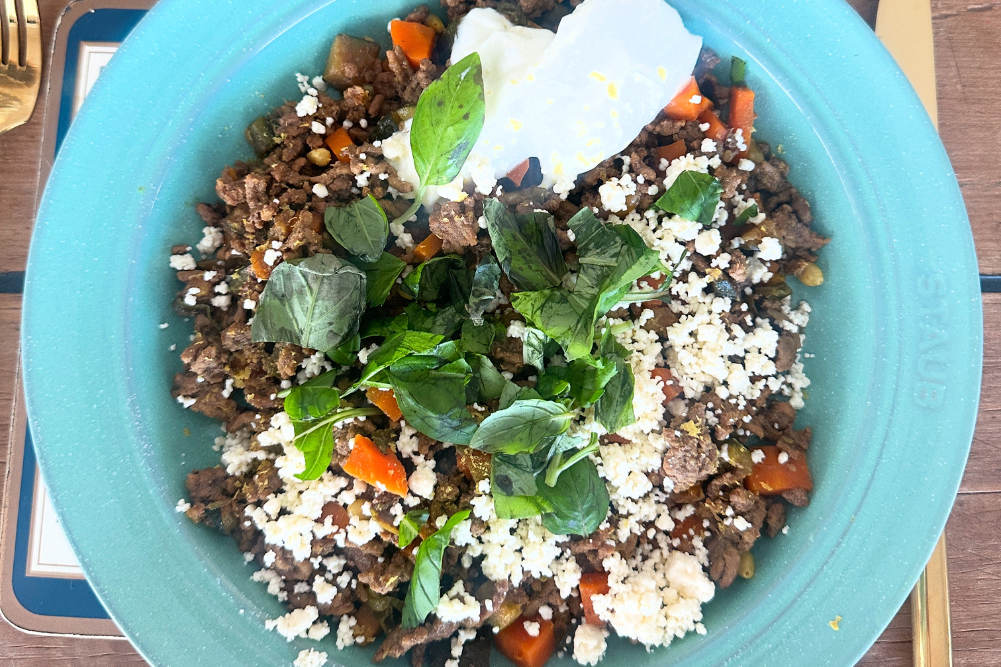Create a future-proof home
Learn how to create a future-proof home to survive years of use and shift with your changing life stages and needs.
Did you know The Jetsons was set in the year 2062? The space-age cartoon family lived in a high-tech world of aero cars and cloud-adjacent homes that supposedly is only a handful of decades from now. First aired in the 1960s, The Jetsons represented a future version of society and family living.
Australian homes today encompass a wide range of styles and sizes, reflecting our diverse population and lifestyle choices. From sunburnt shacks in the dusty outback to sleek inner-city apartments and sprawling double-brick builds in the ’burbs, our residential landscape is worlds away from “Orbit City”, the Jetsons’ town in the stratosphere. Forward-thinking home design, however, can improve life in a myriad of ways.
What is a future-proofed home?
A future-proofed home is designed for longevity, offering reassurance and a sense of security for the homeowners. It represents not only a technologically equipped dwelling but one that incorporates flexibility. It’s a home built to survive years of use, shifting with the inhabitants’ changing life stages and needs. An investment of planning time and dollars during the build or refurbishment of a home can deliver reduced levels of stress and greater financial returns for years to come.
As Sydney-based architect and interior designer Sarah Blacker explains, “Future-proofing your home is about making considered design decisions that will allow for the long-term sustainability of your property, for not just yourself, but future residents, should you move out or add to your family.”
Australian homeowners are holding onto their properties for longer than they were a decade ago, with real estate experts suggesting that exorbitant property prices and the ageing population are the key reasons we stay put for an extended time. Investments in renovations and home upgrades are rising, with data from the Housing Industry Association reflecting record spending across the nation. “There has definitely been a shift with people thinking more long-term about their properties,” Blacker says. “People prefer to stay in the communities they have started their families in and improve their homes, rather than sell and buy the next step up. They prefer to spend extra on renovating and tailoring the house to their needs.”
Matt Goodman of the Melbourne-based architecture office MGAO suggests that a future-proofed home will meet the needs of the homeowners while also addressing the pressing modern-day reality of an aggravated climate crisis. “A future-proofed house is designed to respond to the requirements of a client’s specific needs, providing comfort, prospect and refuge, but it also responds to the greater issues of sustainability and climate change.”
In a dark but pertinent twist to The Jetsons, an official series follow-up in 2017 revealed that living in Orbit City, on the outer reaches of the galaxy, was the only option for civilisation after an environmental apocalypse rendered the Earth uninhabitable for humans. Even in colourful cartoon form, it’s a grim reminder that our decisions have far-reaching consequences, not just for ourselves but also for the entire planet.
Ways to future-proof your home
Save energy
Building an energy-efficient or off-grid home will pay dividends for years to come. Designing energy efficiency into your home gives you a smaller eco-footprint and diminishes the power bills. “I am seeing homeowners wanting to move away from gas and fossil fuels in the home and installing solar panels, or at least being prepared for renewable resources in the home and thinking ahead to that electric car they may have in the not-too-distant future,” says Blacker. Goodman reports a similar sentiment in his client’s requests, adding, “Regulatory standards are shifting the
base level of compliance, which will have a positive impact on the design process.”
A building’s orientation is Goodman’s first consideration for a project, capitalising on the available natural light and airflow to minimise the reliance on artificial temperature control. “Investing in good windows with well-insulated frames and better glass will have flow-on impacts, like saving you on your energy bill for heating and cooling,” Blacker suggests.
Think holistically
A skilled architect or interior designer will design a layout that allows for expansions and updates in stages according to the homeowner’s changing needs and financial situation. Blacker speaks of creating a “master plan” for her clients, encompassing the options for renovations that may occur in stages over a matter of years. “I have seen houses where owners have renovated a bathroom only to realise down the track that it’s the exact spot that works best for the stairs when they are adding a first-floor addition. They’ve had to redo it all because they did not think holistically,” Blacker says.
Forward-thinking design incorporates space provisions for ageing and mobility-impaired householders. This could include additions such as an internal lift or a bathroom retrofitted with rails and built-in seating. “You might not be able to do everything in the master plan straight away,” Blacker continues, “but you want to make sure any work you do or any money you spend is for the long-term benefit of the house and your bank balance.”
Functional layouts
Any “master plans” for the future configuration of your home need to be balanced with a design that works for your specific daily needs. Every household will have different requirements based on the ages and relationships of the inhabitants. Whether for a young couple with a newborn, empty nesters heading into their retirement or a busy blended Brady Bunch-style family, the layout influences how comfortable everyone feels at home. “Younger families want to ensure they have sufficient space for each family member to function autonomously and without being in each other’s pockets, whereas older couples definitely want to factor in short-term accommodation for family members coming to stay, or potentially, future carers,” says Blacker.
For the brave new parents who are also embarking on a renovation or new build, the instinct to position the nursery beside the master bedroom will be strong. “My advice for ‘new parent’ couples would be to design for the future and not solely for your current needs,” Goodman cautions. “The baby stage doesn’t last forever.” Babies quickly grow into toddlers, and before you know it, they are teenagers who would prefer some distance from their parents! Goodman suggests using a study or flexible space near the parents’ room as a nursery in the short term, with the child settling into a bedroom further away from the master bedroom once they gain some independence.
Purposeful spaces
When it comes to the number of rooms in a home, many Australians think the more the merrier. But it’s not necessarily the case. “You see a lot of project homes where they include masses of small rooms to tick boxes — for example media room, study, playroom and so on,” Blacker observes. “But then the spaces are so numerous and small that they don’t work well.”
The key is to shape the available spaces for comfort and purpose. Investing in built-in joinery can expand the functionality of a room and give you extra storage capacity. Goodman notes an increased number of requests for larger homes with the maximum number of bedrooms possible. He suggests adding a level of flexibility to the bedrooms that aren’t occupied full-time. “This could be as simple as using a pull-down wall bed integrated on joinery, to enable a room to function as a home office and a guest bedroom.”
Choose quality
When selecting the surface materials and fittings for a home’s high traffic areas, an investment in quality products will ensure each space looks polished and functions perfectly for longer. While an off-the-shelf flat-pack kitchen may be a convenient and cheap option, it only offers a temporary solution that will warp and render itself useless in a short time. Over the years, the cost of replacing inferior items adds up, so it pays to follow the popular adage: buy once, buy well. “As a minimum, anything that is used regularly or touched often (like benchtops, taps and door handles) should be the areas where good-quality, long-lasting materials are used,” Goodman suggests.
Blacker proposes that a little bit of research will uncover quality solutions that won’t max out your budget. “Investing in all these items does not necessarily mean buying the top of the range. There are many great mid-range products that may only be marginally more expensive than the cheapest, but they will save you in the long run.”
Avoid trends
A future-proofed home will stand the test of time, not just due to its durability but also its style. “My practice is focused on timeless design. I try to avoid gimmicks and trends,” says Blacker. “I want an interior to look like it is meant to be in the house and still look as good in 10 years as it does today.” It’s an intelligent approach, especially when it comes to kitchen and bathroom design. These areas are usually the costliest to renovate, so you want those spaces to retain their appeal for the maximum amount of time possible.
Due to the pervasive nature of social media and the internet’s never-ending spiral of inspiration, design trends now cycle through at a dizzying speed. Often what is “hot” today is a “not” tomorrow. Glossy pages in high-end interior design magazines promote trending colours, shapes and patterns and present them in tantalising, aspirational ways. If you find yourself swayed by the promise of an improved life via the latest shiny, covetable look, take a moment to consider the fact that trends are usually pushed by retailers and brands with a single goal — selling more products.
Stick to what you are authentically drawn to and select elements that complement the proportions of each room and the overall feel of your home. If you can work with a design professional, choose the creatives who, like Goodman and Blacker, believe in “timelessness over trend”.
Get connected
Smart home technology has recently entered a new era of adoption, and it’s set to become even more integrated into our lives. It’s the closest we’ve come to living the daily experiences of our cartoon friends, the Jetsons! Home automation is at the core of the smart home, and it involves high-tech devices controlling the lighting, heating, cooling, home security, sound systems and more. Most smart home features operate via the internet, so a strong Wi-Fi connection is vital for seamless usage. You should also consider the position of appropriately sized wall cavities for easy upgrades and additions to cabling or device storage.
This “digital revolution” can reduce energy costs and increase comfort and assurance levels at home. However, the idea of online home systems causes concern for many Australians. Research by Budget Homes Direct in 2018 found that 57.7 per cent of their survey participants said either privacy or security prevented them from buying a smart home, with respondents aged 34 or less being most concerned about these issues. Interestingly, the older respondents at 65 years and older were more comfortable with the idea of a smart home.
The CSIRO is currently developing a smart home system specifically to help older people live in their own homes for longer and reduce the strain on themselves, their families and the health and aged care systems. With Australia’s ageing population predicted to rise to 22 per cent by 2056 and more than 80 per cent of senior Australians over 60 opting to live at home, according to the CSIRO, a digital transformation of the home can offer independent living and a higher quality of life.
References available on request.
Jessica Bellef is a Sydney-based author and freelance interior stylist. Find her at jessicabellef.com or on Instagram @jessicabellef.








